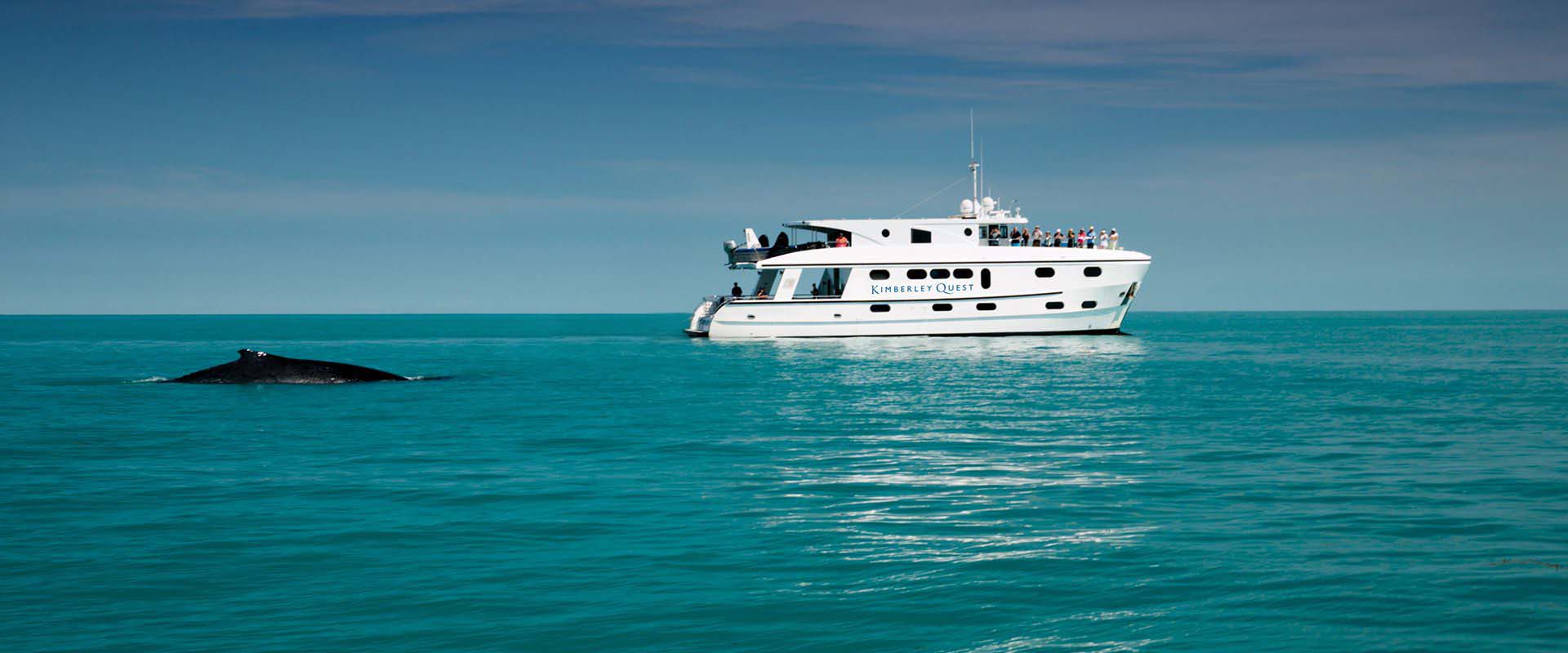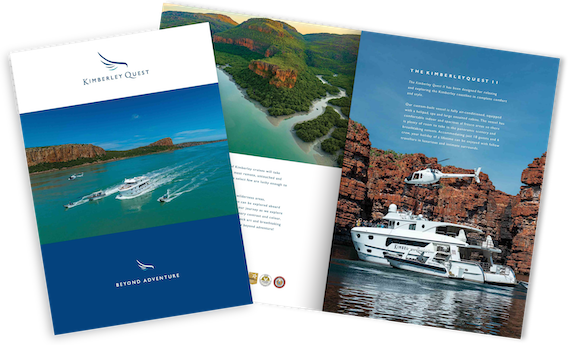Pamela Wade Joins an Expedition Cruise through the waters off the wild and starkly beautiful Kimberley region of Northwest Australia.
“I saw a man get his hand shredded doing that.” Tim remarks, adding for clarification, “to the bone.” Unmoved, Dan continues to swirl the fish frame through the water as four tawny nurse sharks circle in the blue light at the back of the boat. there’s a sudden splash, a fleeting glimpse of something smooth and grey, and then Dan grins, his hand now empty but happily intact.
There’s a lot of talk in the Kimberley about dangerous animals, most notably the saltwater crocodile, but the sharks are the only things we see on a week-long cruise that are remotely life-threatening – and, in fact, even nurse sharks are usually mild-mannered. That’s not to say that dangerous things don’t see us: the crocs are there, but in March the sea is still so warm they have no need to sun themselves on the banks and beaches we pass. Coastline is the Kimberley’s glory: 700 kilometres of rocky shores, plus sounds, estuaries and 2,700 islands. Located in the northwest corner of Australia, the region is not only vast, it’s remote and unpopulated, and on our seaplane flight from Broome we very quickly leave behind anything made by man. Finally there is a white speck among all that empty green, orange, turquoise and blue below. This is the Kimberley Quest, a nine-cabin expedition vessel; a haven of comfort and friendliness in a landscape that is anything but.
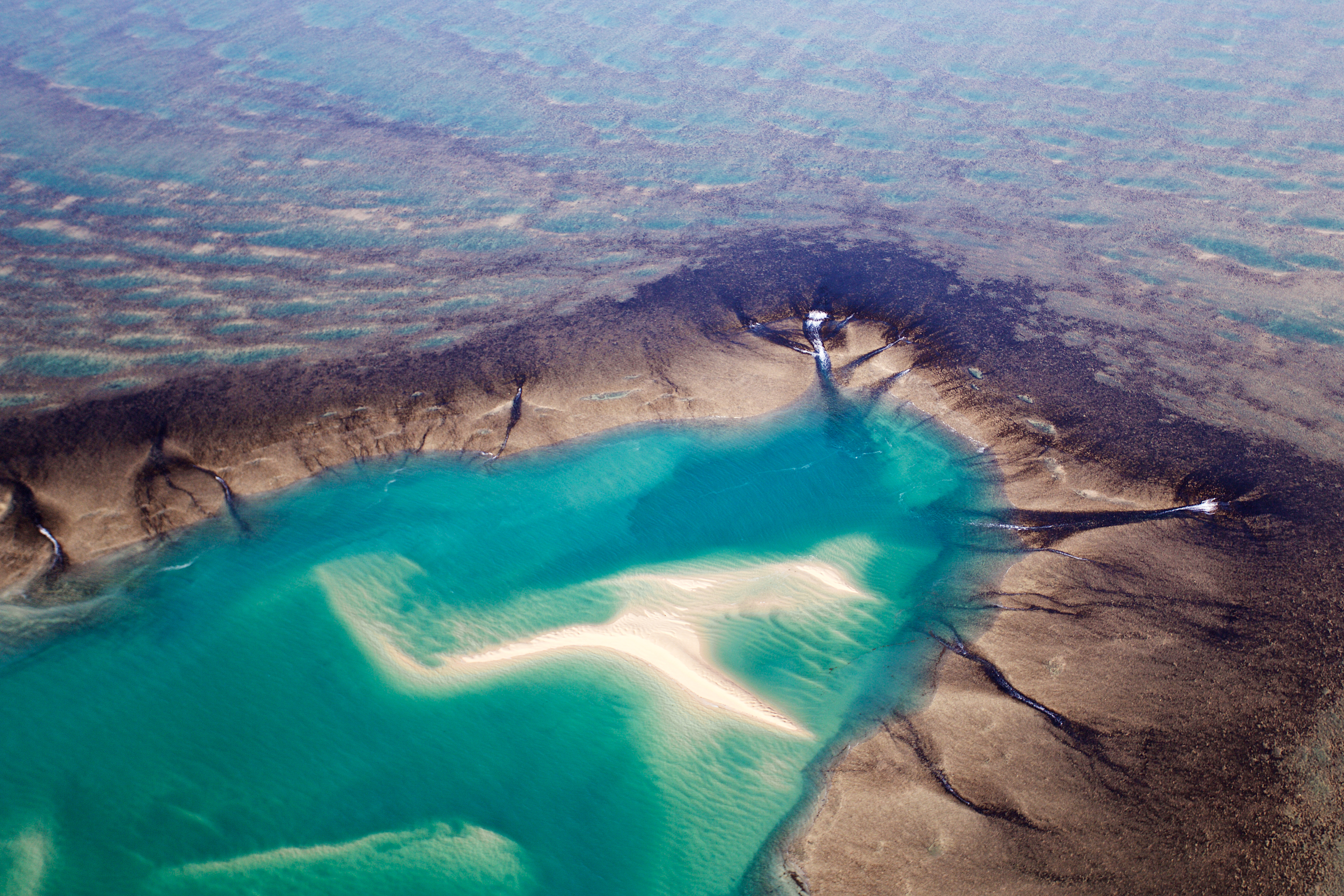
Photo by Jarrad Seng
It’s usual, Dan tells me, for guests to arrive as strangers and leave as friends. “It just always seems to work out,” he says. “Probably because they’re interested in the same things.” There’s a lot to be interested in, and we discover much of it over the next eight days, helped by Tim, the resident naturalist. With over 2,500 plant species, and rocks 1,800 million years old, as well as sea life, birds and 40,000 years of indigenous history, his is a particularly challenging position. He copes well with all our random questions. In fact each member of the seven-person crew is good at his or her job, whether it be owner/skipper Jeff piloting us through complicated river systems with shifting sand bars, hostess Riss keeping us all hydrated or Stephen whipping up feasts in the galley.
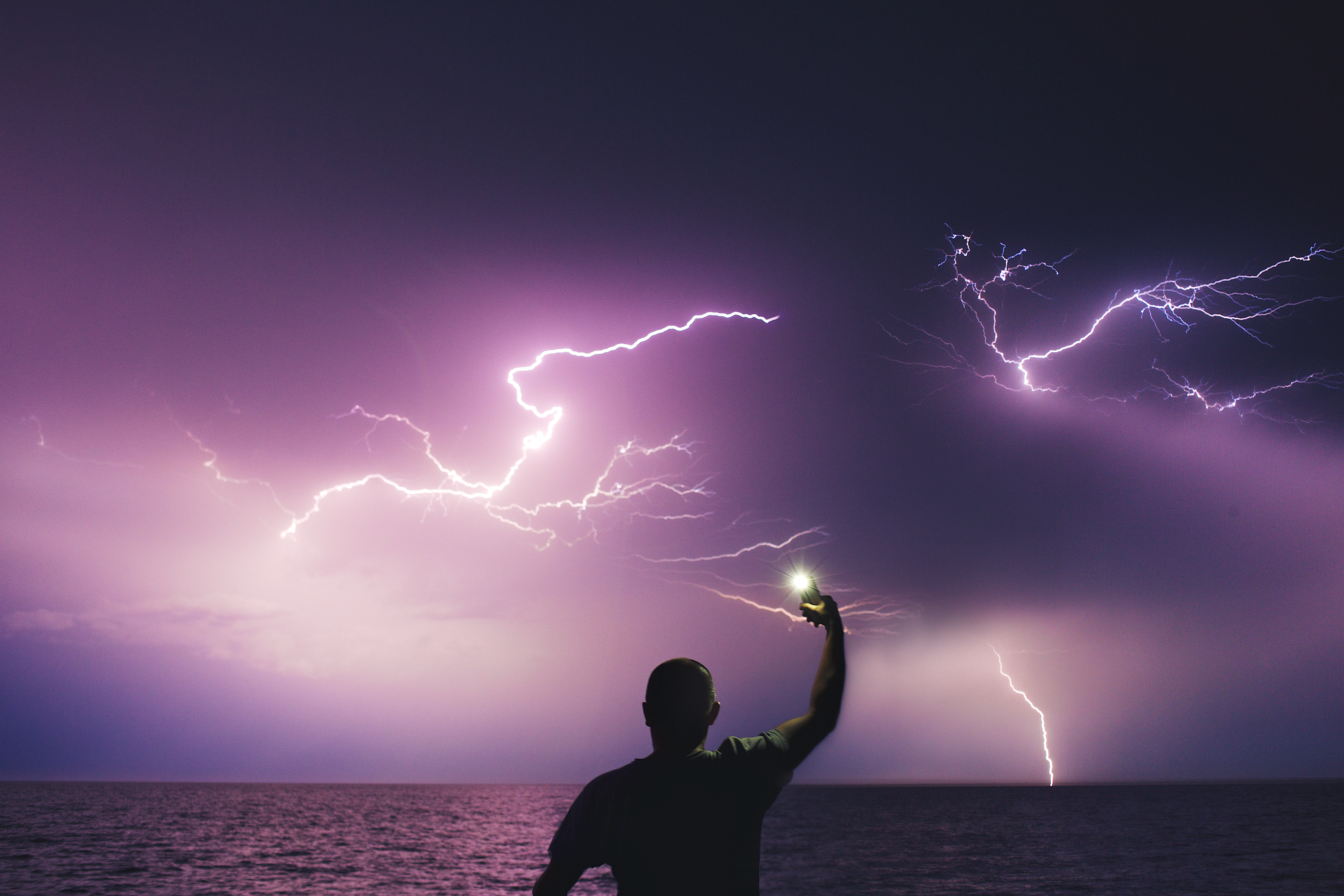
Photo by Jarrad Seng
We eat at the big table on the rear deck: despite the appeal of the air conditioning inside, it’s a favourite place to watch the scenery and intensely coloured sunsets. Upstairs on the top deck, though, is the spa pool, offering the chance to sit in water, on water, with plenty of liquid inside too (the ginger beer from Broome’s boutique brewery, Matso’s, goes down especially well). It’s a wonderfully peaceful and relaxing way to spend an afternoon. We’re up there again after dinner, taking advantage of the lack of light pollution to brush up on our star-gazing. With most of the southern hemisphere stars on show, plus many northern constellations too, the sky is crowded, so it’s good to take anAstroTour with Greg from Broome, even though his clue to the name Canopus is “Kiwi beer”. The shooting stars are a bonus, and flashes of lightning along the horizon add a dramatic touch. March is almost the end of the Wet (season) and it’s much hotter than it will be during the regular tourist season of the Dry, from May to October. In compensation, one day we’re given a phenomenal lightning storm that lasts from late afternoon until past bedtime: six hours of flashes, bolts, forks and squiggles, horizontal and vertical, on all sides. We sit agog on the top deck, thrilling to every new strike, raising our glasses to nature’s power and mostly failing to capture it in a photograph. It’s an unscheduled high point of the cruise. Normally, that title would be taken by the Horizontal Falls, which we fly over on our approach to the boat. From above, it’s clear how they got their name: two flooded valleys in the McLarty Range are joined by narrow passages through which the region’s monster tides – up to 13 metres – struggle to pass, the water piling up on the upstream side and pouring through the gaps just like a waterfall.
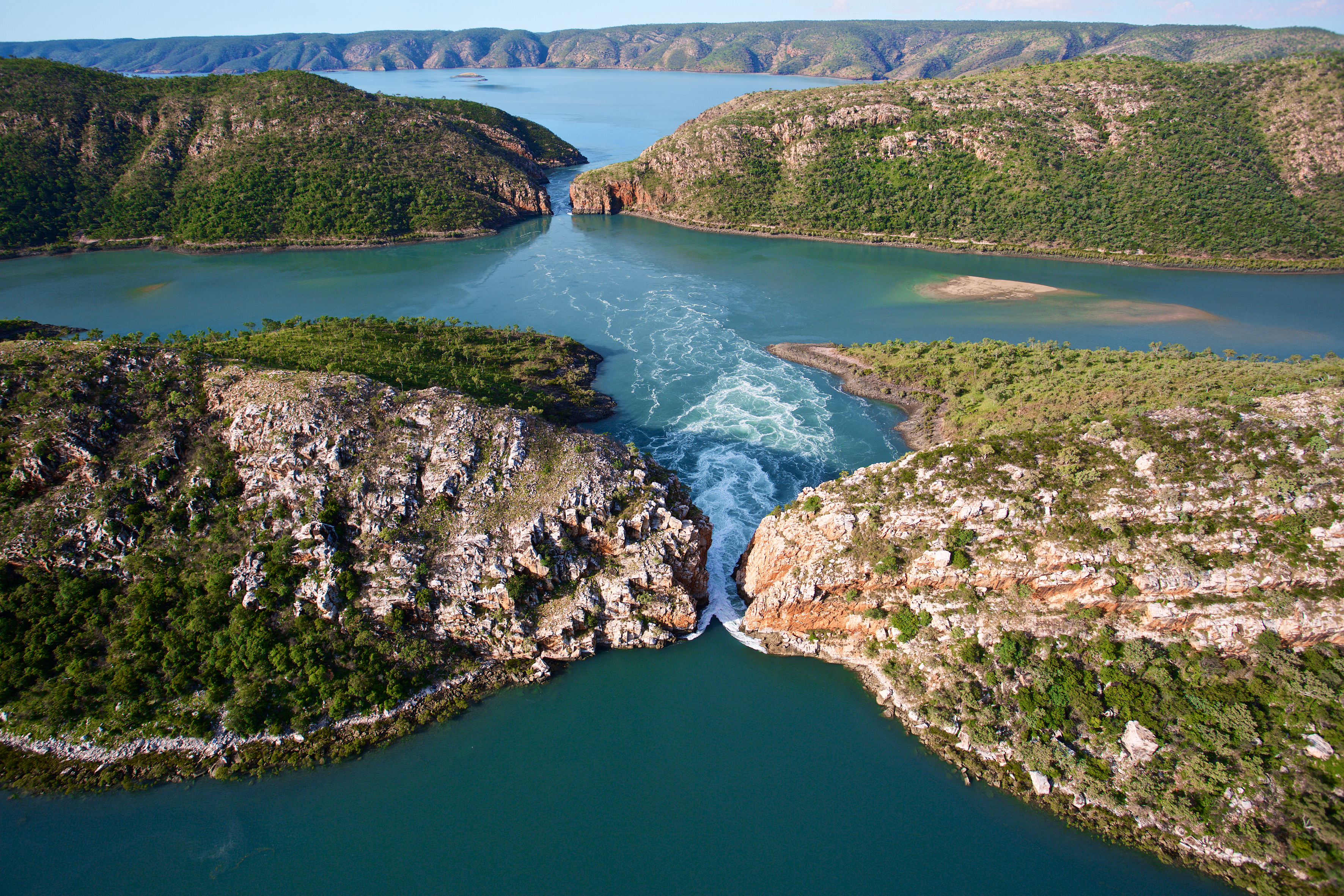
Impressive enough from the air, up close in a powerful motorboat, they’re even more remarkable. Whirlpools swirl on either side as we bounce and bump through the narrow gaps, 40m of water surging beneath us. The difference in water level is obvious: “It only stops for about a minute between tides,” we’re told. “Then it starts again in the opposite direction.” Wherever we go, we can see the effects of the tides. Striking sandstone cliffs, layered and sculpted by millions of years of weather, and streaked bright orange by their iron content, have ruler-straight stains along their bases. The upper tide-mark is frequently above our heads as we set off in the tenders on yet another expedition.
From the air, the dominance of the sea is obvious. Guy takes us up in his helicopter, and we skim over vast Montgomery Reef, 280 square kilometres of coral, blue holes, creeks and sandbars, fringed with waterfalls as the tide retreats. There are fish to catch – rock cod, salmon, barramundi – and Kings Cascade to view, springing white and vigorous still, so soon after the Wet. There are bush walks to sweat along, with a refreshing swim in a palm-fringed waterhole at the end, and rock art to view. Indigenous guides Kenny and Callum smear our cheeks with ochre and take us to see the Kimberley’s unique Wandjina people floating under an overhang, round-headed and mouthless. We sit in the welcome shade, a breeze rustling the grasses, and listen to Dreamtime stories.
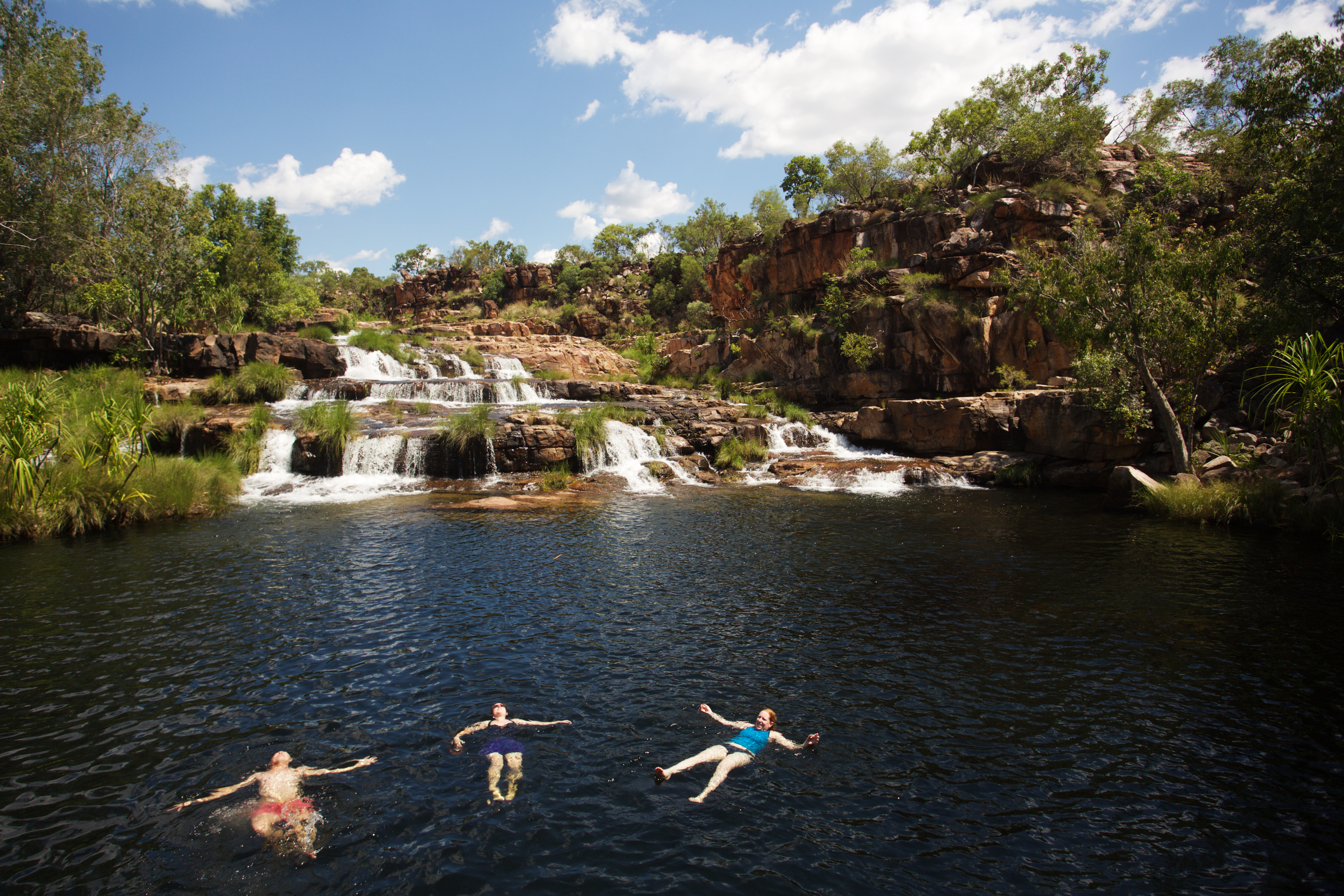
Photo by Jarrad Seng
They’re a way of making sense of this extraordinary region, starkly beautiful, huge and empty, dangerous and seductive; of the rivers, reefs and bush, the high mesas and hidden caves; the weather, the wildlife and the water. Over millennia, they have helped the indigenous people to survive here. For us, that’s the role of the Kimberley Quest.
The author travelled courtesy of Kimberley Quest, Tourism WA and Air New Zealand, which has direct flights most days Auckland-Perth, with connections to Broome.

